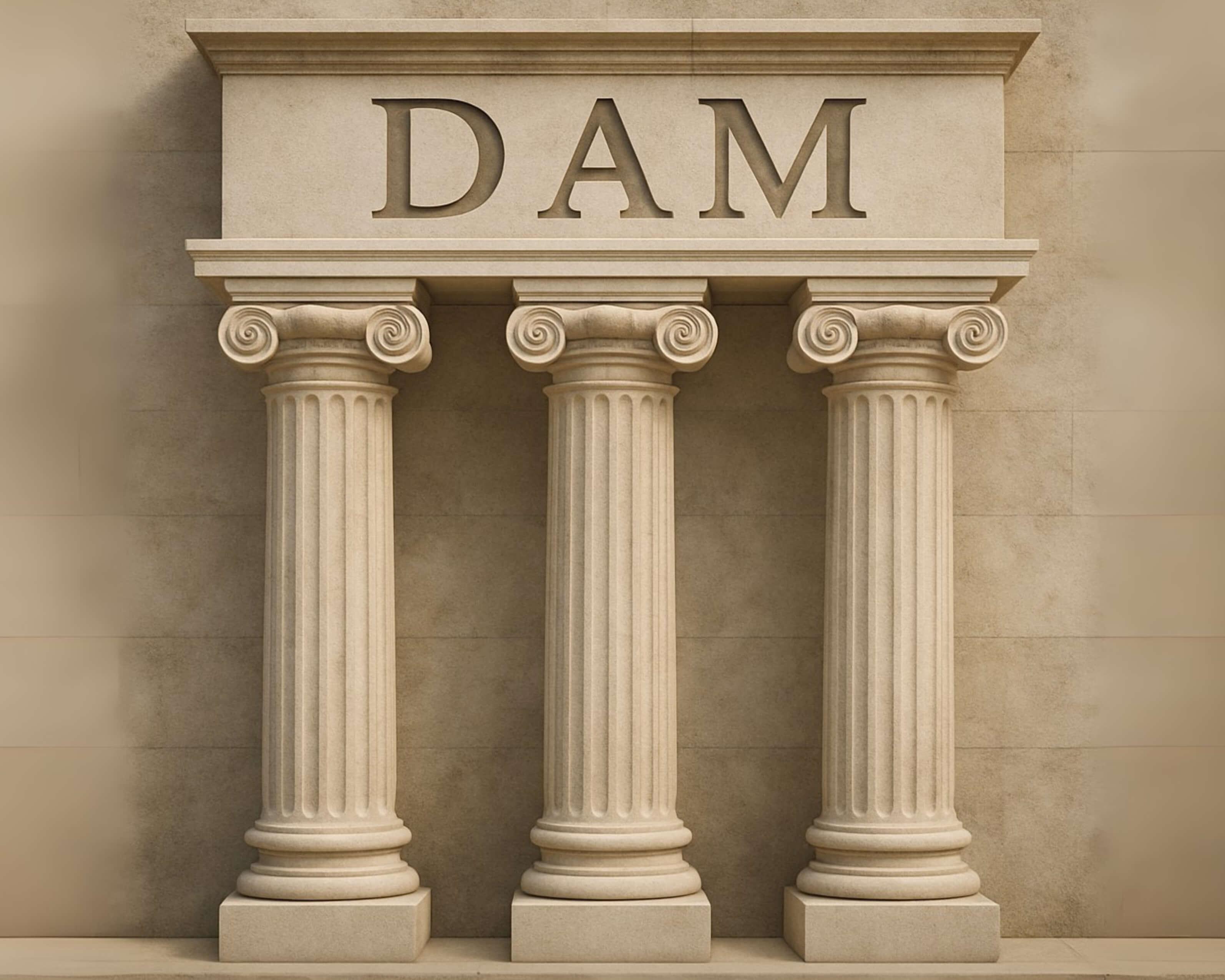
Yvan Cohen
Tue Aug 12 2025
AI, Integration, and Collaboration: The Three Pillars of Powerful DAM
 Generated by Katya Mulvaney
Generated by Katya Mulvaney
Digital Asset Management (DAM) is one of the fastest-growing sectors in the content technology space—a natural response to the tidal wave of digital content flooding organizations every day. DAM is increasingly viewed as a necessity rather than a ‘nice-to-have’.
In a buzz-worthy sector like DAM, the online space hums with experts sharing their insights and strategies.
At LightRocket, we like to think of ourselves as pre-buzz DAM professionals—building solutions before Digital Asset Management became a mainstream must-have.
We created our first DAM systems over 20 years ago. At that time, we were looking for solutions to the challenges we faced as archive owners (we ran our own photo agency back then), ingesting content, managing contributors, making content discoverable and distributing it securely.
Fast forward to 2025, and our drive to innovate is stronger than ever—especially as AI unlocks new possibilities for DAM platforms.
Accurate search, privacy, security and tracking still top our feature lists but are increasingly jostling for the limelight with the dazzling possibilities being unlocked by AI.
As we find ourselves managing an ever-growing galaxy of apps, the question of integration has become increasingly vital too.
Not to mention the impact of workplaces evolving from physical locations to a concept that drifts between a physical space and the virtual universe.
Remote working has created fresh challenges and opportunities for us all. When people are not necessarily in the same place, questions of how they can collaborate efficiently become even more crucial.
These three elements – AI, integration, and collaboration – have become the core pillars of our vision for the future and lie at the center of the evolution of the LightRocket DAM system.
Let’s look at each one a little more closely.
 Generated by Katya Mulvaney
Generated by Katya Mulvaney
Pillar One: Artificial Intelligence in DAM
I’ve positioned AI as the first pillar because it is very much the star of the show. AI is changing our world in ways so fundamental and far-reaching, it’s still difficult to predict exactly how it will impact our lives, even just a few years from now.
One thing is beyond doubt; AI has huge potential to boost the power and efficiency of digital asset management systems.
While automatically generated AI tags may not be perfect; they save resources and refine certain searches (especially when it comes to identifying physical elements in an image or video).
Facial recognition is another area where AI is transforming and deepening our ability to tag visual assets. We’ve already adopted this exciting AI technology and our clients are loving it.
Identify and name an individual just once using facial recognition and AI will do the rest; recognizing every previous and future instance of that person’s face and adding the appropriate tag. It’s scarily accurate and thrillingly efficient. The time savings are tremendous.
There are so many other ways AI can enhance digital asset management. It can parse natural language queries, offer automated translations (which are getting better), and instantly scan text (optical character recognition or OCR), to name a few possibilities.
Like every technology, AI has its limitations. We’re at pains to remind clients and users that AI can’t analyze what it doesn’t see. It can’t see context (that which exists outside the frame).
If you have an image of a woman and child, for example, it doesn’t know the relationship between those individuals. Gender, too, is difficult to determine just by analyzing the visible elements of an image. There is still plenty of space for valuable human input when it comes to tagging, annotating, and classifying files.
 Generated by Katya Mulvaney
Generated by Katya Mulvaney
Pillar Two: DAM Collaboration Tools
Finding ways to work together means developing strategies that nurture our collective potential.
In the case of DAM systems like ours, we are always striving to release more value for our clients, not just from the digital assets themselves but from the ways users interact with content and each other. This means developing smart functionality and streamlined workflows.
Enhancing collaboration also means finding user journeys that are not on parallel tracks, but designed to offer multiple points of intersection; where users can review and process content collectively and collaboratively.
A good example of this is our ‘Lightbox’ feature which allows users to add content to a virtual edit space and then invite others to review, comment on, and rate that content.
Watch this space. We’ll be continuing to expand collaborative functionality within LightRocket in the weeks and months ahead. We already have the ability to create Teams with their own mini admins, but we’ll be looking to deepen opportunities for securely sharing and reviewing content.
The drive is to open up our digital asset management service, while keeping all digital content in a secure and centralized environment.
 Generated by Katya Mulvaney
Generated by Katya Mulvaney
Pillar Three: DAM Integration and Single Source of Truth
Hang out at a DAM conference long enough and you’ll hear an expert of some stripe start referring to the need for digital asset management systems to serve as a ‘single source of truth’. If the popular jargon has a slightly cultish ring to it, the principle is nevertheless widely accepted as sacrosanct for DAM providers.
Your DAM system should serve as a central and unique repository for all your digital assets. Fragmentation and dispersion of content throughout an organization are the core problems DAM systems were created to solve. ‘Centralise, centralise, centralise,’ goes the mantra.
An equally valid mantra might also be ‘integrate, integrate, integrate’.
Integration in this context means creating digital bridges and portals (or connectors) between your ‘single source of truth’ DAM and the myriad of apps you use in other areas of your work.
By integrating with other apps, the goal is to avoid any ongoing fragmentation and scattering of your archives as users download from your DAM only to re-upload into another app. Before long you’ll have mini archives mushrooming throughout your organization and the much-vaunted control offered by your DAM risks being lost.
This is actually a lot more challenging than it sounds. At LightRocket we struggled to keep up with the constant changes at Adobe, for example. The task of integrating with a growing list of apps proved too distracting and just too much work for a small team like ours.
Enter Ci-Hub with whom we have partnered for our integrations. An energetic and highly efficient Berlin-based company, Ci-Hub saw an unmet need and is now providing its connectors to many DAM industry leaders. At LightRocket, we’re still new to Ci-Hub but we’re looking forward to leveraging their impressive technology and offering our clients an array of integration opportunities that will ensure their DAM platform remains their ‘single source of truth’.
The Way Forward
At the end of the day, DAM is about more than just storing files—it’s about empowering people to work smarter with their content. As we continue to evolve LightRocket, AI, integration, and collaboration aren’t just buzzwords to us; they’re practical priorities shaping the way we build and improve our platform.
If your organization is ready to streamline workflows, secure content, and get more value from every digital asset, contact us today to see how LightRocket’s DAM platform can work for you.
Written by Yvan Cohen | Yvan is a Co-Founder of LightRocket and has spent the past two decades immersed in the challenges and realities of digital asset management. As a professional photojournalist, Yvan uses his decades of media experience to help shape LightRocket's world-class DAM platform; focusing on collaboration, intuitive workflows and continuous innovation.

